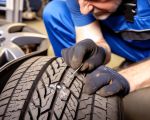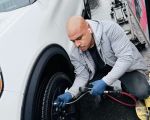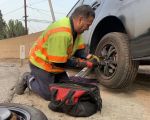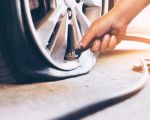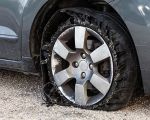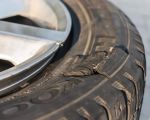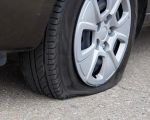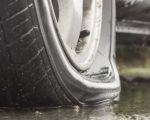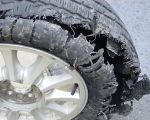How to Detect a Slow Leak in a Flat Tire: A Complete Guide
One of the most common and frustrating issues a driver can face is dealing with a flat tire. While a complete blowout is immediately noticeable, a slow leak in a tire can be trickier to detect. I've been caught in this situation before, and it wasn’t until I experienced a slow leak firsthand that I truly understood how important it is to catch it early. Not only can a slow leak be a hassle to deal with, but if left unchecked, it can lead to even bigger problems down the road. In this guide, I’m going to walk you through everything I’ve learned about how to detect a slow leak in a flat tire and how to address it before it becomes an emergency. Whether you're a seasoned driver or a new one, the tips I share here will help you handle a flat tire situation with confidence and ease.

MR. TIRE INC.
2078 New York Ave, Huntington Station, NY 11746, USA
1. Understanding Slow Leaks in Tires
Before diving into how to detect a slow leak, it's important to understand what a slow leak is and how it differs from a sudden blowout. A slow leak is a gradual loss of air from a tire, which can occur due to a number of factors, such as a small puncture, valve stem damage, or a cracked wheel. Unlike a sudden blowout, which is immediate and often startling, a slow leak happens over time and can be difficult to notice until your tire pressure becomes dangerously low.

Firestone Complete Auto Care
1933 N Placentia Ave, Fullerton, CA 92831, USA
1.1 Common Causes of Slow Leaks
From my experience, slow leaks can be caused by several different factors, some of which are easier to spot than others. Here are the most common causes I’ve encountered:
- Punctures: A sharp object like a nail, screw, or piece of glass can puncture the tire, causing a small hole that lets air out slowly.
- Damaged Valve Stem: The valve stem is the part of the tire that you use to inflate it. If it's cracked or damaged, it can allow air to escape over time.
- Worn-out Tire Beads: Over time, the tire bead (the edge of the tire that seals against the rim) can wear down, causing an imperfect seal and leading to slow air loss.
- Cracked Wheels: If your wheel has a crack, air can leak through, even if the tire itself is in good condition.
- Temperature Changes: Extreme temperatures, especially cold weather, can cause tire pressure to drop, making a slow leak more noticeable.
Identifying the cause of a slow leak can help in determining the best solution. In some cases, the issue can be easily fixed, while in others, it might require a more involved repair or replacement.
1.2 The Importance of Detecting a Slow Leak Early
When I first encountered a slow leak, I didn't notice it immediately. I was driving, and everything seemed fine until my car started handling strangely, and I noticed my fuel efficiency had dropped. Once I realized what was happening, I understood just how important it is to catch these leaks early. A slow leak can cause uneven tire wear, reduce your fuel efficiency, and, most importantly, it can lead to a blowout if the tire pressure drops too low. That's why regularly checking your tire pressure and being aware of the signs of a slow leak can save you a lot of headaches later on.
2. How to Detect a Slow Leak in Your Tire
Detecting a slow leak can be a bit tricky, but it’s certainly doable with the right approach. I’ve learned that there are a few effective methods you can use to identify a slow leak in your tire, and I’ll walk you through the ones that worked best for me.
2.1 Visual Inspection
The first thing I did when I suspected a slow leak was perform a visual inspection of the tire. A lot of times, the cause of the leak is visible. I checked for any obvious punctures or foreign objects stuck in the tread. If there’s a nail, screw, or any debris lodged into the tire, it’s likely the cause of the leak. However, sometimes the leak can be harder to spot, especially if it’s caused by a damaged valve stem or a cracked wheel. If you don’t see anything unusual, it’s time to move on to the next step.
2.2 Soapy Water Test
If a visual inspection didn’t reveal the issue, the next step I took was the soapy water test. This method is simple but effective. Here's how to do it:
- Mix some dish soap with water in a spray bottle or a bucket.
- Spray or pour the soapy water over the tire, focusing on the sidewalls, valve stem, and tread.
- Look for bubbles forming on the tire. If you see bubbles, that’s a clear sign that air is escaping from that spot, indicating the location of the leak.
I found this method to be very helpful, especially in pinpointing small, hard-to-spot leaks. It’s a quick and inexpensive way to track down the source of the problem.
2.3 Tire Pressure Check
If you don’t see any visible signs of damage, but your tire pressure is low, it’s a sign that there’s a slow leak. I’ve found that checking your tire pressure regularly with a good-quality tire pressure gauge is one of the easiest ways to detect a slow leak. If your tire pressure keeps dropping even after inflating it to the proper level, there’s a good chance that you have a slow leak. Many gas stations offer free air compressors and pressure gauges, which makes this an easy method for anyone to try.
2.4 Listening for Leaks
Another method I’ve used to detect a slow leak is simply listening for it. At night, when it’s quieter, you can sometimes hear the air escaping from a small puncture or crack. I found that by getting close to the tire and listening intently, I could hear a faint hissing sound. This method can be tricky because the leak may be too small to hear, but it’s worth trying if you’re stuck.
3. What to Do After Detecting a Slow Leak
Once I identified a slow leak, the next step was deciding how to address the problem. Depending on the size and location of the leak, there are a few options available.
3.1 Temporary Fixes
If you’re in a pinch and need a temporary fix, I’ve learned that tire repair kits can be helpful. These kits usually include plugs or sealant that can be used to seal up small punctures until you can get to a professional repair shop. However, I found that these fixes are just temporary and should not be relied upon for long-term use. Always make sure to get your tire fully repaired as soon as possible to avoid further damage.
3.2 Professional Repair or Replacement
In most cases, once a slow leak is detected, it’s best to take the tire to a professional. If the puncture is small and located on the tread, a repair can usually be done. However, if the leak is in the sidewall or if the tire is significantly damaged, replacement may be necessary. I’ve always found that having a professional inspect the tire is the safest option to avoid any future issues or further damage.
4. How to Prevent Slow Leaks in the Future
After dealing with a slow leak, I realized that regular maintenance is key to preventing these issues in the future. Here are a few steps I now take to keep my tires in good condition:
4.1 Regular Tire Inspections
One of the best ways to prevent a slow leak is to have your tires inspected regularly. I now make sure to check my tires for any visible damage, cracks, or foreign objects every few weeks. A quick visual inspection can help catch potential issues before they become bigger problems.
4.2 Proper Tire Inflation
Maintaining the correct tire pressure is essential for both safety and efficiency. I make sure to check the tire pressure regularly and ensure that it’s at the recommended level. This not only helps prevent slow leaks but also improves gas mileage and extends the life of the tires.
4.3 Avoiding Harsh Driving Conditions
Driving on rough or debris-filled roads can increase the chances of tire damage. Whenever possible, I avoid driving over sharp objects or rough terrain that could puncture the tires. By taking it easy on the roads, I’ve managed to extend the life of my tires and avoid unnecessary damage.
5. Conclusion: Don’t Ignore a Slow Leak
Dealing with a slow leak in a tire might not seem like a big deal at first, but as I’ve learned, it’s important to detect and fix the issue as soon as possible. Whether you’re doing a visual inspection, using soapy water, or checking tire pressure, there are several ways to catch a slow leak before it becomes a major problem. Regular tire maintenance and awareness of the signs of a slow leak can save you time, money, and a lot of frustration. If you find yourself unable to repair the leak, don’t hesitate to call a professional or towing service to assist you with the repair. A small problem today can lead to much bigger issues tomorrow if left unchecked.














